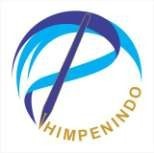Karakteristik Tanah Gambut Transisi dan Gambut Pedalaman Kalimantan Selatan pada Tingkat Perombakan Hemik
Abstract
Peat soil has various characteristics due to differences in peat-forming materials, formation processes, and environmental conditions. In South Kalimantan, the environment of peat formation is more dominant in the form of transition peat and inland peat. This study aims to determine the characteristics of transition peat soil and inland peat, including soil pH, total acidity, carboxylic functional groups (-COOH) and OH-phenolic functional groups, in South Kalimantan at the level of hemic reshuffle. This study used a purposive sampling method with regard to the decompotion degree of peat, i.e., hemic (half baked). The soil used comes from transitional peat (Sub-district of North Ulin/LUU and West Ulin Platform/LUB) and inland peat (Banjang District, Hulu Sungai Utara/HSU) and Kandangan Subdistrict, Hulu Sungai Selatan/HSS). The results showed that soil acidity in transitional peat (LUU and LUB) was higher than inland peat (HSU and HSS) as indicated by the pH value of transitional peat soil with a range of 4.25 and a total acidity concentration of 234.16 cmol kg-1 for transitional peat, while the carboxylic groups (-COOH) concentration in transition peat (LUU and LUB) and inland peat (HSU and HSS) showed almost the same concentration of 94.91 cmol kg-1 in transitional peat (LUU and LUB) and 92.83 cmol kg-1 in inland peat (HSU and HSS). The concentration of OH-phenolic groups in transitional peat (LUU and LUB) is higher than inland peat (HSU and HSS), which is indicated by the transitional peat OH-phenolic (LUU and LUB) groups concentration of 139.25 cmol kg-1.
References
Adon, R., Ismail, B., Devapriya, C.W., Adnan, Z. 2012. Overview of the sustainable uses of peat soil in Malaysia some relevant geotechnical assesments. International Journal of Integrated Engineering 4(4), 38-46.
Aidilfitri, M., Muhammad, R., Nur, A.A., Zaima, A.Z.A., Suhaila, M.O. 2015. Isolation of bacteria from the acidic peat swamp forest soil and their lignin degradation potential. Jurnal Teknologi (Sciences & Engineering) 77(24), 77–81. doi.org/10.11113/jt.v77.6711
Azri. 1999. Sifat kering tidak balik tanah gambut dari Jambi dan Kalimantan Tengah. Thesis Institut Pertanian Bogor. Bogor.
Barchia, M.F. 2006. Gambut: Agroekosistem dan Transformasi Karbon. UGM Press. Yogyakarta. 196p.
Couwenberg, J., Hooijer, A. 2013. Towards robust subsidence-based soil carbon emission factors for peat soils in south-east Asia, with special reference to oil palm plantations. Mire and Peat 12(01), 1-13.
Hanifah, T.A. 2018. Analisis kandungan natrium dan kadmium serta tingkat kematangan tanah gambut bekas terbakar berulang. Seminar Nasional Pelestarian Lingkungan (SENPLING), Riau, pp. 310-316.
Hikmatullah., Kusumo, N., Muhrizal, S. 2013. Characterizing the cultivated lowland peat soils in two physiography positions in Kalimantan, Indonesia. International Research Journal of Agricultural Science and Soil Science 3(7), 246-255.
Huat, B.B.K., Sina, K., Arun, P., Maassoumeh, B. 2011. State of an art review of peat: General perspective. International Journal of The Physical Sciences 6(8), 1988-1996. 10.5897/IJPS11.192
Kononova. M.M 1968. Transformation of organic matter and their relation to soil fertility. Sov. Soil. Sci. 8, 1047-1056.
Könönen, M., Jauhiainen, J., Laiho, R., Kusin,K., Vasander, H. 2015. Physical and chemical properties of tropical peat under stabilised land uses. Mire and Peat 16, 1-13.
Masganti, Anwar, K., Susanti, M.A. 2017. Potensi dan pemanfaatan lahan gambut dangkal untuk pertanian. Jurnal Sumberdaya Lahan 11(1), 43-52. dx.doi.org/10.21082/jsdl.v11n1.2017.43-52.
Noor, M. 2001. Pertanian Lahan Gambut: Potensi dan Kendala. Kanisius, Yogyakarta.
Noorginayuwati, Saragih, S. 2013. Kearifan Lokal Petani dalam Pengelolaan Lahan Gambut.: Pemanfaatan dan Pengembangannya untuk Pertanian. Kanisius, Yogyakarta.
Polak, B. 1975. Character and Occurrence of Peat Deposits in The Malaysian Tropics. In : Barsta, G. J., Casparie, W.A. (Eds.), Modern Quaternary Research in Southeast Asia, Balkema, Rotterdam.
Posa, M.R.C., Lahiru, S.W., Richard, T.C. 2011. Biodiversity and conservation of tropical peat swamp forests. BioScience 61(1), 49-57. doi.org/10.1525/bio.2011.61.1.10
Sukandarrumidi. 1995. Batubara dan Gambut. Gadjah Mada University Press, Yogyakarta.
Surahman, A., Peeyush, S., Ganesh, P.S. 2018. Are peatland farming systems sustainable? Case study on assessing existing farming systems in the peatland of Central Kalimantan, Indonesia. Journal of Integrative Environmental Sciences 15(1), 1-19. doi.org/10.1080/1943815X.2017.1412326
Sarifudin, Zulkifli, N., Abdul, R., Budi, M. 2016. Effect of seawater on physicochemical characteristics of Sumatra lowland peat. International Journal of Scientific & Technology Research 5(5), 68-72.
Tan, K.H. 1998. Dasar-dasar Kimia Tanah. Gadjah Mada University Press. Yogyakarta.
Teong, T.I , Felix, N.L.L., Mohd, S., Sulaeman, A. 2010. Characterization of soil organic matter in peat soil with different humification levels using FTIR. IOP Conference Series Materials Science and Engineering 136(1), 012010. 10.1088/1757-899X/136/1/012010
Wahyunto, S. Suparto, H. Subagjo. 2005. Sebaran Gambut dan Kandungan Karbon di Sumatera dan Kalimantan. Wetlands International Indonesia Programme, Bogor.
Zainorabidin, A., Mansor, S.H. 2016. Investigation on the shear strength characteristic at Malaysian peat. ARPN Journal of Engineering and Applied Sciences 11(3), 1600-1606.

















